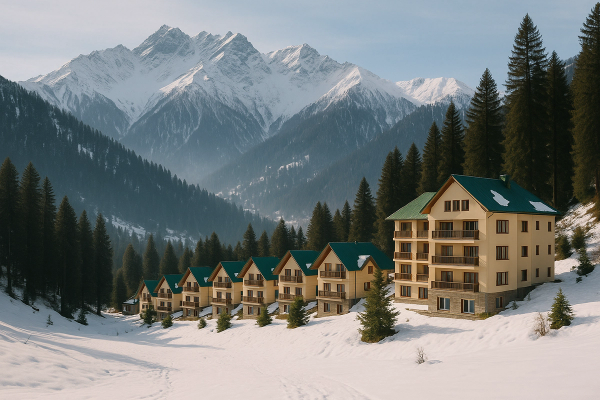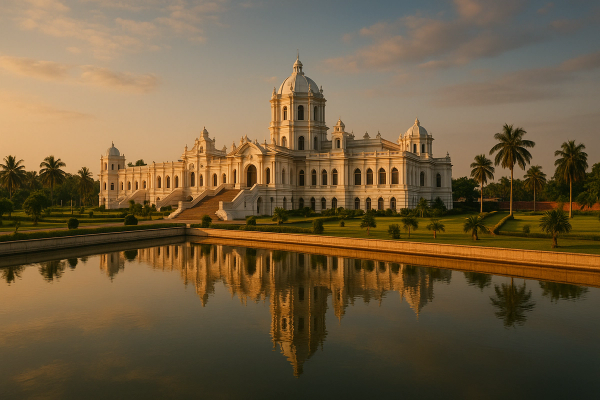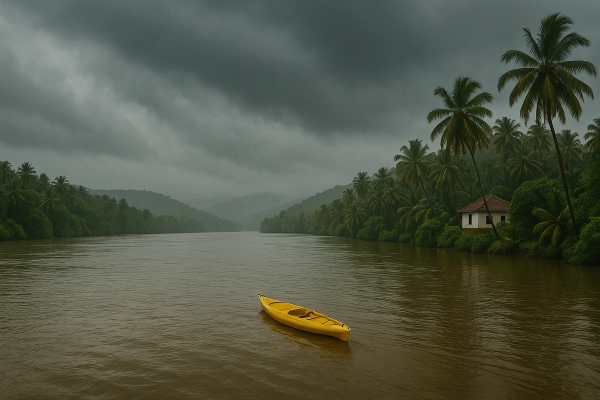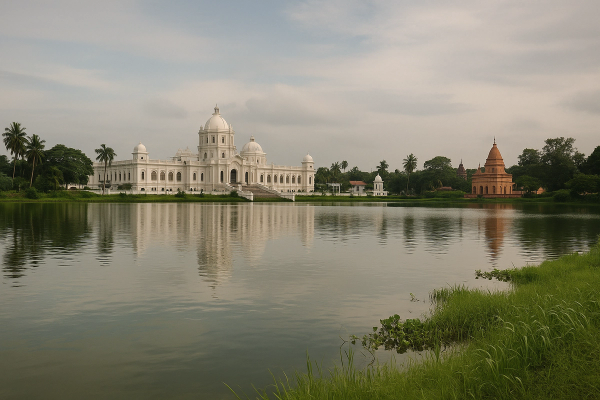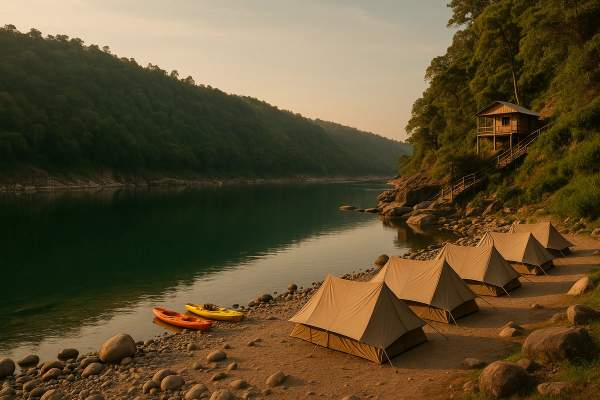
Okay, Let's Talk Spiti Valley Monasteries – A Real Deal Himachal Adventure#
Alright, so you're thinking about heading to Spiti? Good choice. Seriously. Forget your usual beach vacays for a sec. We're talking high-altitude desert, mountains that look like crumpled brown paper bags reaching for the sky, and this... this silence that’s kinda deafening at first. It's raw, it's epic, and smack in the middle of it all are these ancient Buddhist monasteries. This isn't just sightseeing; doing a Spiti Valley monastery tour is like stepping back in time, but like, way cooler. It’s a proper cultural deep-dive into Himachal Pradesh's Buddhist heritage. You ready? Let's get into it.¶
So, What's Spiti Valley Actually Like?#
Imagine Tibet, but in India. That's kinda the vibe. Lahaul and Spiti is this district in Himachal Pradesh, tucked away behind huge mountain passes. It's super remote, very sparsely populated, and the landscape is just... stark. Think barren slopes, the bright blue Spiti River cutting through, and tiny green patches where villages cling to life. The air is thin (like, really thin, we'll get to that), the sun is strong, and the culture is predominantly Tibetan Buddhist. It feels worlds away from anywhere else in India, honestly. It's part of the Buddhist Circuit India for a reason – the history and spirituality here run deep.¶

When Should You Even Go? Timing is Kinda Key#
Okay, this is important. Spiti isn't exactly a year-round destination unless you're hardcore (or, you know, live there).¶
Summer Lovin' (June - September)#
This is prime time. Why? Because the roads are actually open. The snow melts off the high passes (like Kunzum La and Rohtang/Atal Tunnel route from Manali). The weather is pleasant during the day – sunny, maybe a bit chilly, but generally good for exploring. Nights are cold, obviously. This is when most people visit, so expect to see other travelers, but it's rarely 'crowded' like Shimla or Manali.¶
- Pro: Best weather, all routes usually accessible, everything's open.
- Con: It's 'peak' season, so homestays might fill up quicker, but honestly, it's still Spiti, not Disneyland. You'll find somewhere.
Shoulder Seasons (May & October)#
These months are a bit of a gamble. May might see the Manali route open, but it's not guaranteed. October sees things starting to get properly cold, and snow can block passes anytime. BUT, if you get lucky, you get fewer people and stunning autumn colours (mostly yellow poplars). It's beautiful, but pack seriously warm gear and be prepared for road closures.¶
Winter Warriors (November - April)#
Yeah, unless you have a very specific reason and are extremely prepared, just... maybe don't? The Manali route is shut. The Shimla route stays open (mostly) but it's looong and conditions can be brutal. Temperatures plummet way below freezing. Like, -20°C or -30°C isn't unusual. It's starkly beautiful, apparently, but incredibly harsh. Most guesthouses close. Only for the truly adventurous (or slightly mad?).¶
Getting Your Boots on the Ground: Reaching Spiti & Moving Around#
Getting to Spiti is an adventure in itself. No airports or train stations in Spiti Valley, obviously. You gotta earn it.¶
The Two Main Routes:#
- Via Shimla & Kinnaur: This is the longer route, usually takes 2-3 days just to reach Kaza (the main town in Spiti). BUT, it's generally open most of the year (except for occasional landslides) and the altitude gain is more gradual, which is way better for acclimatization. You drive through beautiful Kinnaur Valley first. Recommended if you have time.
- Via Manali: This is quicker, often doable in a day (a very long day) from Manali to Kaza, thanks to the Atal Tunnel and then over the Kunzum Pass (around 14,900 ft!). It's stunningly dramatic, but the altitude gain is RAPID. Like, seriously rapid. Higher risk of Altitude Mountain Sickness (AMS). This route is only open in summer (roughly June-Oct).
How to Travel:#
- Public Buses (HRTC): Yep, state buses go there! They are slow, bumpy, maybe not the comfiest, but super cheap and a real local experience. They run on both routes in season.
- Shared Taxis: You can often find these in Shimla/Reckong Peo or Manali. More comfy than the bus, faster, bit more expensive. You'll be squeezed in, though.
- Private Taxi: Most comfortable, most flexible, most expensive. Good if you're in a group to split costs. Lets you stop wherever you want for photos (and you'll want to stop. A lot).
- Self-Drive/Motorbike: Super popular, especially biking. Gives you ultimate freedom. But man, those roads... they're rough. Potholes, gravel stretches, water crossings, sheer drops. Be experienced, be prepared, and make sure your vehicle is up to it. Like, really sure.
Getting Around Within Spiti:#
Once you're in Kaza, you can hire local taxis for day trips to the monasteries. There are also some local buses connecting villages, but schedules can be... flexible. Hitchhiking is sometimes possible too. If you have your own vehicle, great! Just remember distances look short on the map but take ages to drive.¶
Real Talk Tip: Acclimatize! Seriously. Don't rush, especially if coming via Manali. Spend a night or two in Kaza doing basically nothing before heading higher. Drink water. Avoid booze initially. AMS is real and can ruin your trip (or worse). Listen to your body.
Where to Crash: Homestays, Guesthouses, and Monastery Vibes#
Accommodation in Spiti is mostly simple, but that's part of the charm. Don't expect luxury resorts.¶
- Homestays: The BEST way to experience Spiti, imo. You stay with a local family, eat home-cooked food (so good!), and get a real insight into their lives. They're basic – maybe a shared squat toilet, maybe no running hot water – but warm, welcoming, and super affordable. Found in almost every village.
- Guesthouses: Mostly found in Kaza and Tabo, and a few other larger villages. Offer private rooms, sometimes attached bathrooms, maybe even Wi-Fi (don't count on it working well). A bit more comfort than a homestay, but less personal.
- Monastery Guesthouses: Some monasteries, like Key and Tabo, offer basic rooms for visitors. It's an amazing experience to stay right there, soak in the atmosphere, maybe hear morning prayers. Facilities are very simple, but the vibe is incredible.
- Hotels: Kaza has a couple of places that call themselves hotels. They're the priciest option, offering more amenities, but still pretty basic by city standards.
Budget-wise, homestays are dirt cheap. Guesthouses are budget to mid-range. Hotels are mid-range (for Spiti). Food is usually very affordable everywhere.¶
The Main Event: Exploring Spiti's Incredible Monasteries#
Okay, this is why you came, right? The monasteries in Spiti aren't just buildings; they're living centres of Buddhist culture, perched in the most insane locations. Each has its own unique feel.¶
1. Key Monastery (Ki / Kye Gompa)#
This is probably the most famous image of Spiti. Key Monastery looks like something out of a fantasy movie, a jumble of white-washed rooms and temples clinging to a conical hilltop overlooking the Spiti River. It's huge, it's ancient (dates back centuries, though rebuilt many times), and it's home to hundreds of monks (including young novices, who are often super curious).¶
Wander through the narrow passages, peek into prayer halls filled with thangkas (scroll paintings), statues, and ancient scriptures. The views from the rooftop? Forget about it. Absolutely breathtaking. Sometimes you can catch the monks chanting, which is just... mesmerizing. They often offer visitors butter tea – try it! It's... an acquired taste, maybe? Salty.¶
Visiting Tip: Go early morning or late afternoon for the best light and fewer day-trippers from Kaza. And just sit for a while. Soak it in. Don't just snap a pic and leave.
2. Tabo Monastery: The Ajanta of the Himalayas#
If Key is dramatic, Tabo Monastery is subtle and profound. It's located in Tabo village, down in the valley floor. Founded over a THOUSAND years ago (like, 996 AD!), it's one of the oldest continuously functioning monasteries in the Himalayas. It looks unassuming from the outside – a collection of mud-brick structures.¶
But step inside the old temples (there are several)... wow. The walls are covered in incredible murals and stucco sculptures, ancient and beautifully preserved (thanks to the dark, dry conditions). It's called the 'Ajanta of the Himalayas' for a reason. Photography is strictly forbidden inside the old temples to protect the artwork, so put the camera away and just look. It feels incredibly sacred and peaceful. There's also a newer, more colourful monastery nearby, but the old complex is the real treasure. It's a UNESCO World Heritage site too, which tells you something.¶
3. Dhankar Monastery & Fort#
Dhankar Monastery is all about the location. Perched precariously on a rocky spur high above the confluence of the Spiti and Pin Rivers, it looks like it could tumble down any second (and sadly, it's facing structural issues). It was once the capital of the Spiti kingdom, and you can still see the ruins of the old fort nearby.¶
The monastery itself is smaller than Key, but the climb up offers insane panoramic views. Inside, there are some old murals and a statue of Vairochana (Dhyana Buddha). The real highlight, though, is the setting and the history. There's also a small, beautiful high-altitude lake (Dhankar Lake) about an hour's trek above the monastery – totally worth it if you have the energy and are acclimatized.¶
Other Cool Monasteries & Spots#
- Komic Monastery: Located in Komic, often cited as one of the highest motorable villages in the world (around 15,000 ft!). Small monastery, incredible views, friendly monks.
- Hikkim: Famous for having the highest post office in the world. Send a postcard! It's right near Komic.
- Langza: Known for the giant gold-painted Buddha statue overlooking the valley. Also a good place to find fossils.
- Lhalung Monastery: One of the oldest in Spiti, known for its unique statues made by god-artists, apparently.
- Kungri Monastery (Pin Valley): The main monastery in the beautiful Pin Valley (a side valley off Spiti), belonging to the Nyingmapa order (different from the Gelugpa order of Key/Tabo/Dhankar).
Monastery Etiquette: Don't Be That Tourist#
Okay, super important. These are active places of worship. Be respectful.¶
- Dress Modestly: Cover shoulders and knees. No shorts, tank tops, etc.
- Remove Shoes: Always take off your shoes before entering temple buildings or prayer halls. Leave them outside.
- Ask Before Photographing: Especially people (monks). Inside temples, photography is often forbidden, especially flash. Respect the signs.
- Walk Clockwise: When walking around stupas (chortens) or main monastery buildings, always walk in a clockwise direction (keep the structure to your right).
- Be Quiet & Respectful: Keep your voice down, especially inside prayer halls. Don't disturb praying monks.
- Donations: There are usually donation boxes. Leaving a small contribution is appreciated.
- No PDA: Public displays of affection are a no-no.
Basically, just be chill, observe, and be mindful that you're a guest in a sacred space. Common sense, really.¶
Fueling Your Adventure: What to Eat in Spiti#
Food in Spiti is simple, hearty, and influenced by Tibetan cuisine. Homestays are the best place to try authentic local stuff.¶
- Thukpa: A warming noodle soup with veggies or sometimes meat. Perfect for chilly evenings.
- Momos: Tibetan dumplings, steamed or fried, filled with veggies or meat. You'll find them everywhere.
- Thenthuk: Another noodle soup, but with flat, hand-pulled noodles. Super comforting.
- Butter Tea: The traditional drink. Made with tea leaves, yak butter, and salt. Definitely try it once!
- Seabuckthorn Tea: This bright orange berry grows wild in Spiti. The juice or tea is tangy and full of vitamins. Delicious.
- Dal Bhat / Roti Sabzi: Standard North Indian fare is also widely available, especially in Kaza.
- Maggi: Lol, yes. Instant noodles are a staple, especially at small roadside dhabas.
My Fave? Honestly, the simple meals at homestays. Freshly made roti, local veggies (sabzi), dal (lentils), maybe some rice. Warming, filling, and made with love. Can't beat it.
Super Practical Tips for Your Spiti Trip#
A few more things to keep in mind for a smooth trip.¶
- Acclimatization, Again: Cannot stress this enough. Take it slow the first couple of days at altitude. Diamox can help prevent AMS, but consult your doctor before you go.
- Cash is King: ATMs are mostly only in Kaza and Reckong Peo, and they often run out of cash or don't work. Carry enough cash for your entire trip – homestays, food, local transport usually require it.
- Connectivity Desert: Don't expect reliable phone signal or internet. BSNL/MTNL postpaid sometimes works in Kaza and Tabo, maybe a few other spots. Jio/Airtel are patchy at best. Forget about fast data. Download offline maps. Enjoy the digital detox!
- Packing Essentials: Layers are key. Warm jacket (puffer/fleece), thermals, woolen cap, gloves, scarf (even in summer). Sunscreen (high UV!), sunglasses, sun hat. Sturdy walking shoes. Basic first-aid kit (painkillers, antiseptic wipes, bandages, meds for stomach issues, AMS meds if prescribed). Lip balm, moisturizer (it's DRY). Headlamp/torch. Reusable water bottle. Power bank.
- Permits: If entering via Kinnaur (near the Tibetan border), foreign nationals might need an Inner Line Permit (ILP). Indian nationals usually don't, but rules can change. Check the latest requirements before you go. Usually obtainable in Reckong Peo or Shimla.
- Respect the Environment: Spiti is fragile. Carry back your non-biodegradable waste. Avoid single-use plastics as much as possible. Stay on marked trails.
Be a Good Guest: Responsible Travel in Spiti#
Traveling here comes with a responsibility. It's a unique culture and environment.¶
- Minimize Waste: Plastic is a huge problem. Carry a reusable water bottle and maybe a water filter/purifier tablets. Refuse plastic bags. Pack out everything you pack in.
- Respect Culture: We talked about monastery etiquette. Extend that respect to villages too. Ask before taking photos of people. Dress modestly. Be mindful of local customs.
- Support Locals: Stay in homestays, eat at local dhabas, hire local guides/drivers, buy local handicrafts (responsibly). Ensure your money benefits the community.
- Water Conservation: Water is scarce. Use it wisely.
Basically, tread lightly and leave the place better (or at least no worse) than you found it. It's not that hard, right?
So, Should You Go? Uh, YES.#
Look, a trip to explore Himachal Pradesh and specifically the Spiti Valley monasteries isn't your typical relaxing holiday. The journey is tough, the altitude is real, the comforts are basic. But the rewards? Oh man. The landscapes are mind-blowing, the silence is golden, and the sense of spirituality and ancient culture you feel at places like Key Monastery, Tabo Monastery, and Dhankar Monastery is something else entirely.¶
It's a journey that challenges you but also changes you, even just a little bit. It's proper cultural travel in Himachal, raw adventure, and a spiritual recharge all rolled into one. Honestly, it's one of the most incredible places I've ever been.¶
Have you been to Spiti or planning a trip? Got any more questions or tips? Drop 'em in the comments below! Let's chat about it. Or maybe check out some other adventures if Spiti feels a bit much right now (but seriously, go to Spiti!).¶



